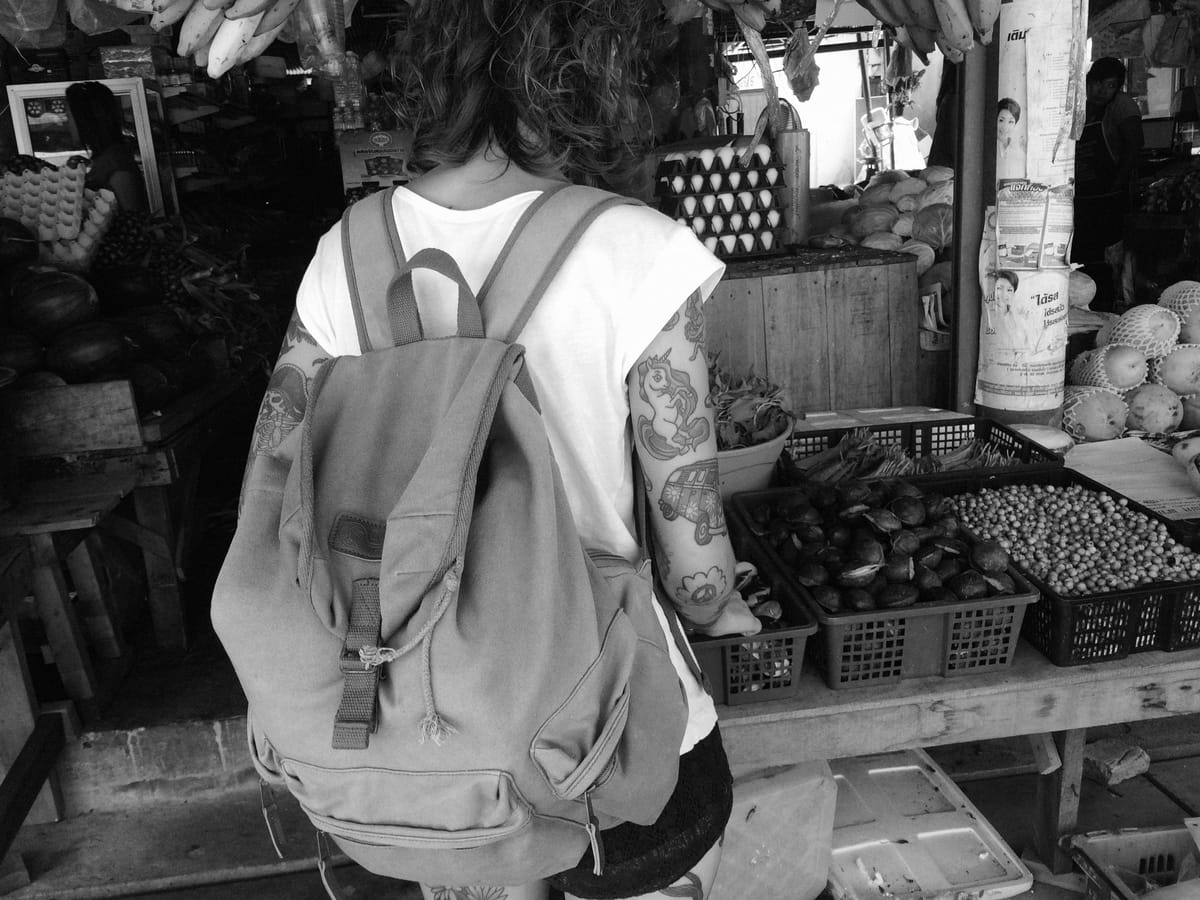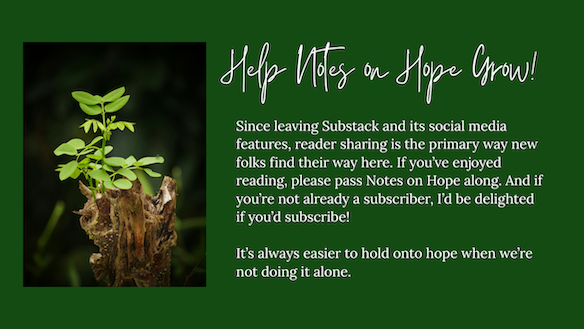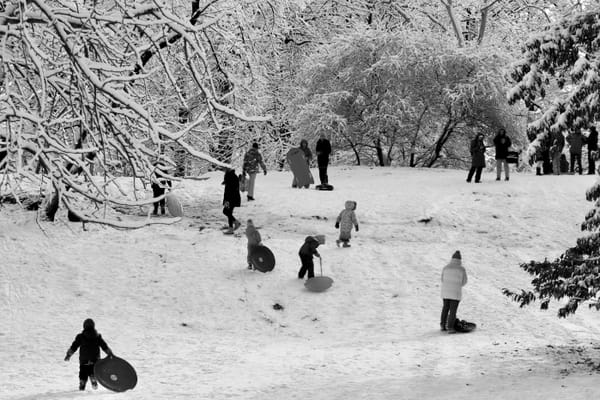When Food Is Hope
An essential, concrete way to be of use today

“It’s a kind of
love, isn’t it?
To commit to enduring.
Despite, despite.”
~Kathy Jetñil-Kijiner
I’m going to keep my note a little briefer than usual today, because I’d like to ask you to spend the time that you might otherwise spend reading doing something else. I’d like to ask you to feed people.
There are many frightening and dispiriting things happening right now, and it can be extremely easy to put our heads down and dig into our routines when we feel overwhelmed. It’s often so hard to know where to begin, and there is so much that feels beyond our individual control. But today we are on the brink of a very specific crisis that we actually can do something to mitigate. So I hope you’ll join me in trying. Even when we can’t solve problems at the scale we’d like to, a willingness to step into the breach and do what we can still matters. This is one of those times.
At the end of this month, there is a high likelihood that SNAP (Supplemental Nutrition Assistance Program) benefits will come to an end as a result of both the ongoing government shutdown and the funding bill that has provoked the shutdown, which calls for eliminating almost $187 billion in funding for SNAP through 2034. Even if the government shutdown were to end tomorrow, the impact of this bill on hunger in America would be profound.
Joel Berg, the CEO of Hunger Free America, has said that if SNAP funding runs out, “we will have the greatest hunger catastrophe in America since the Great Depression, and I don’t say that as hyperbole.”
There are actions the government is legally obligated to take to ensure that contingency funds are used to protect SNAP benefits through a shutdown, and the funding reserves are available. However, the mechanisms necessary to distribute contingency funding in time needed to be set in motion weeks ago when the shutdown began, and this has not been done. Additionally, the administration has said that it will not use contingency funds to protect SNAP.
SNAP is the country’s largest anti-hunger program. 1 in 8 people in the US depend on SNAP, many of whom are children. In New York City, for example, 30% of SNAP beneficiaries are children. Nationally, that number is closer to 40%. In addition to family assistance, the public schools also rely, in part, on SNAP funding to provide food to children at school.
The ripple effects of hunger are both rapid and profound. Food is our most basic need. When we don’t have enough resources for food, we’re forced to make impossible choices—food instead of rent or heat or medical care or transportation. For children, losing access to regular meals also quickly leads to learning loss, because you can’t think clearly when you’re dizzy with hunger, and because some children stop attending school in order to help bring in additional income when family resources are stretched too thin. For families, nothing else can be prioritized if you can’t feed your children. Food is the foundation upon which all other parenting choices are either made possible or restricted, and many families don’t have the savings available to subsist through unexpected gaps in resources, even if they are working. Most households that rely on SNAP include at least one working adult, and most SNAP recipients who are able to work do work, though loss of these funds would also have a significant impact on the elderly and the disabled.
States and non-profit food-aid organizations do not have the capacity to fully meet the crisis that is about to unfold without federal support. But, unlike many other issues where our individual capacity for impact often feels extremely limited, food access is an area where each of us can make a meaningful difference easily and locally. Even if we can’t bridge the gap entirely, when it comes to food, any impact we can have is important.
Food is the absolute most basic way one person can offer hope to another. If you’re hungry, an apple is hope. If you can't feed your child, a granola bar is hope. Every little bit allows you to make it to the next day, and that is the most rudimentary and essential definition of hope I can think of.
So, as an act of concrete, meaningful hope this week, I’m asking you to find a way to help your community prepare for the crisis of hunger that most likely lies ahead and, ideally, to consider how you might make that help carry on beyond this week. I’ve provided some resources below to get you started, including resources to support parents in involving children.
If you would be willing to share your actions or your own local resources in the comments, so others can follow your lead, that would also be wonderful. We all tend to be more likely to take action when we see others doing so. This is an area where being “performative” is actually extremely helpful on a practical level. If being public about how you are helping prompts even one other person to take their own action, you’ve already magnified your impact.
Simone Weil said,
“The love of our neighbor in all its fullness simply means being able to say to him: ‘What are you going through?’”
We all need to be asking that question now. We may not be able to stretch all the way across the gap that is about to become dramatically wider. But we can attend to one another. And we can feed one another.
I hope you will take up this challenge with me. Add a comment below if you'd like to share your actions and additional resources that might help others.
Wishing you security, nourishment, and the ability to nourish others,
Alicia
Food Access Resources
Giving money, if you can, will have the most impact. Food aid organizations can stretch a dollar much farther than an individual can, because they’re able to buy food in bulk. They also know what resources their communities most need.
If you are not able to give food or money, consider whether you might be able to volunteer time, or contact a local food pantry and ask them if there is anything else they need that you might have. Or find a mini-pantry or community fridge and participate in mutual aid, which allows you to give what you can and take what you need.
Find a Local Food Pantry, Mini-Pantry, or Community Fridge
- Feeding America
- Food Bank for NYC: Find Food
- LA Food Bank: Find Food
- Find a Mini-Pantry or Community Fridge
- Find a Community Fridge in New York
Resources for Kids
- Sesame Workshop: Food Insecurity Resources
- How Kids Can Make a Difference: A Family Guide
- Books for Kids about Food Insecurity & Poverty
- Kids Can Help Fill a Community Fridge or Little Free Pantry
- Mutual Aid Facts for Kids
- Ways to Engage Kids in Community Care
More Ways to Learn and Help
Make Food for Your Neighbors
This can even be done on an individual scale, as this man has been doing since 2023.
Help End School Lunch Debt
Support schools in paying off school lunch debt and creating reserve funds for school lunch, so children can eat at school, without embarrassment, regardless of their family’s financial circumstances.
Feeding America: More Ways to Take Action
From donating to volunteering to organizing — find your lane.
There Is No Place for Us by Brian Goldstone
Food insecurity is often the first step toward homelessness, because of the impossible choices that lack of food creates, even for working families.






